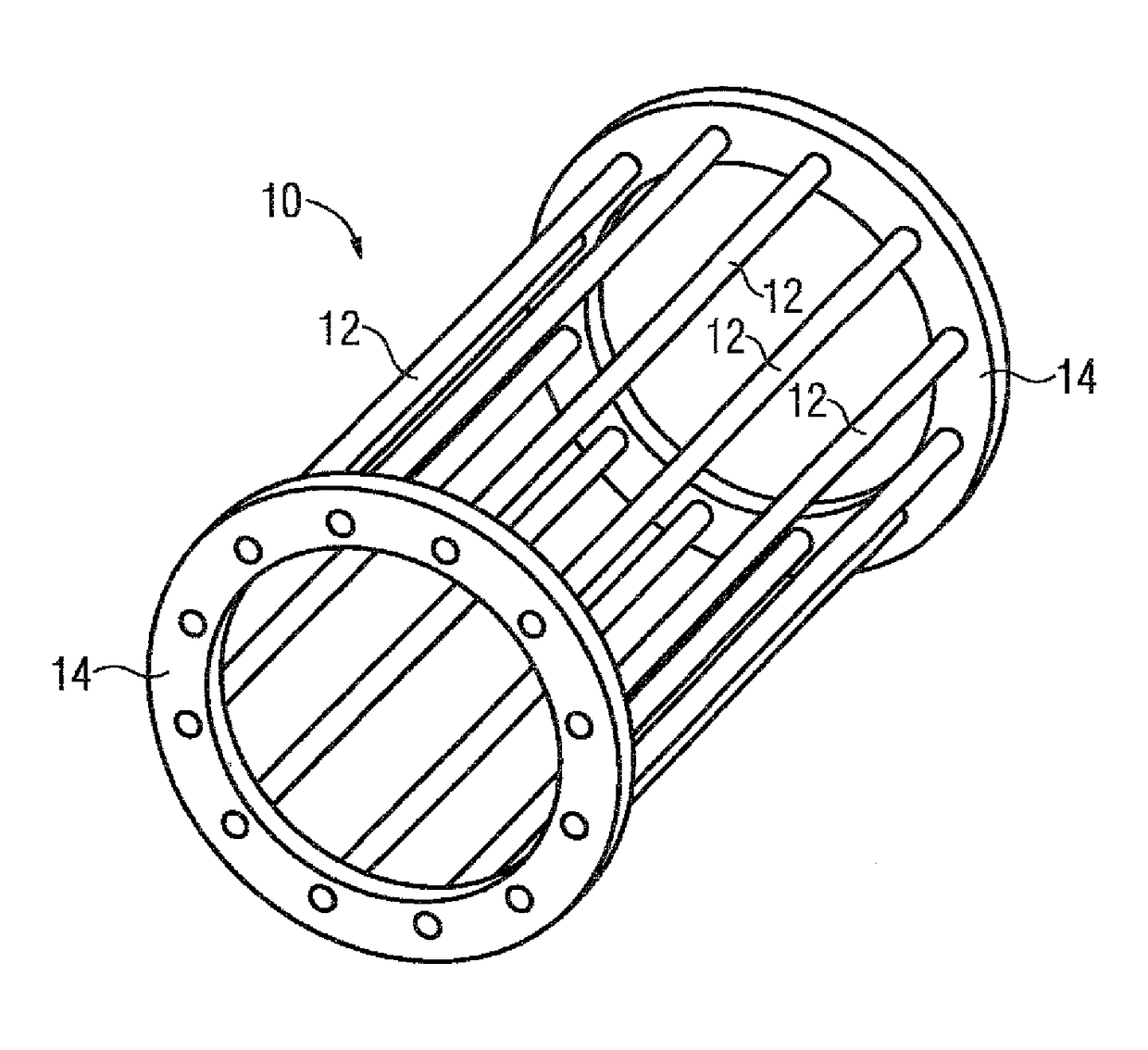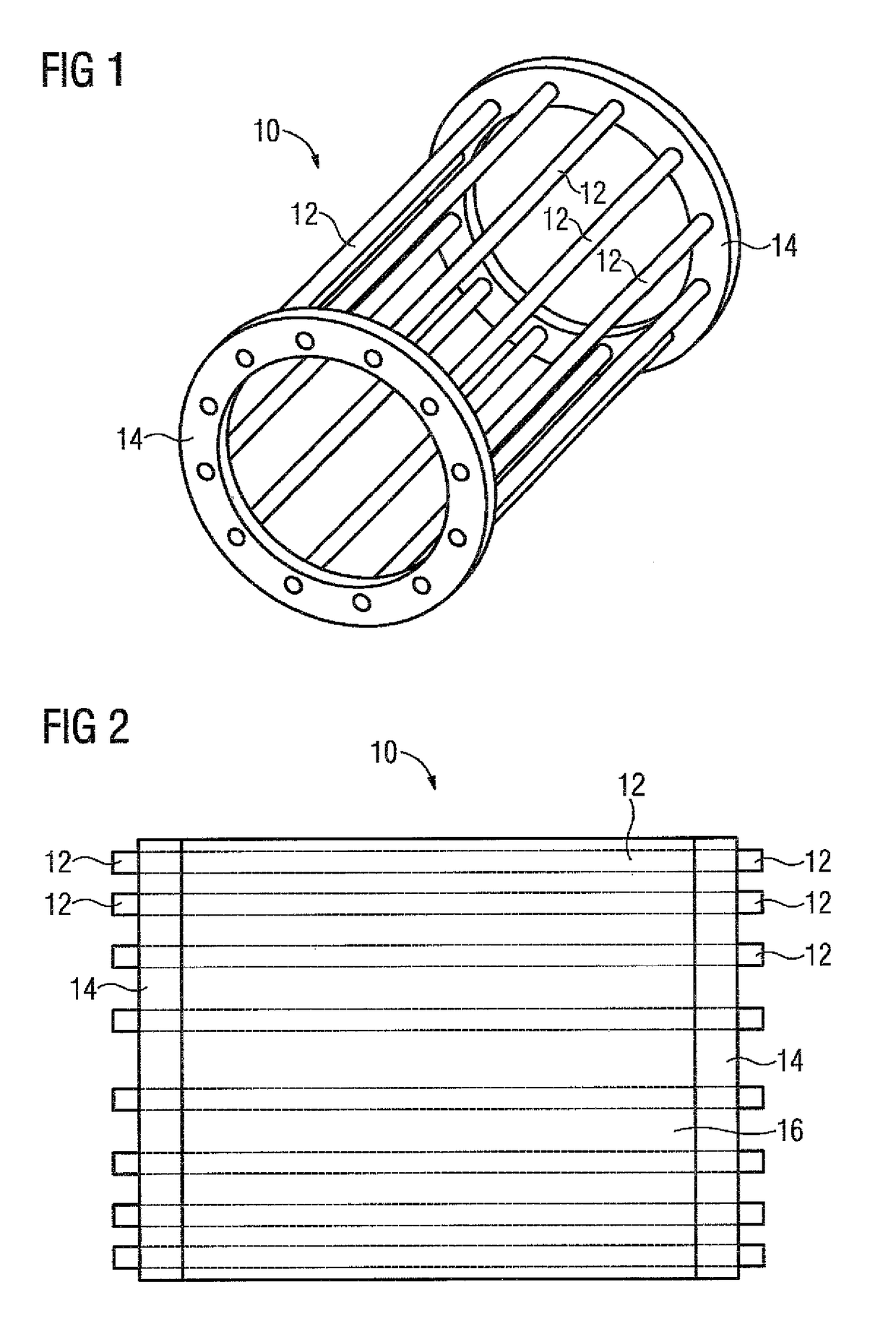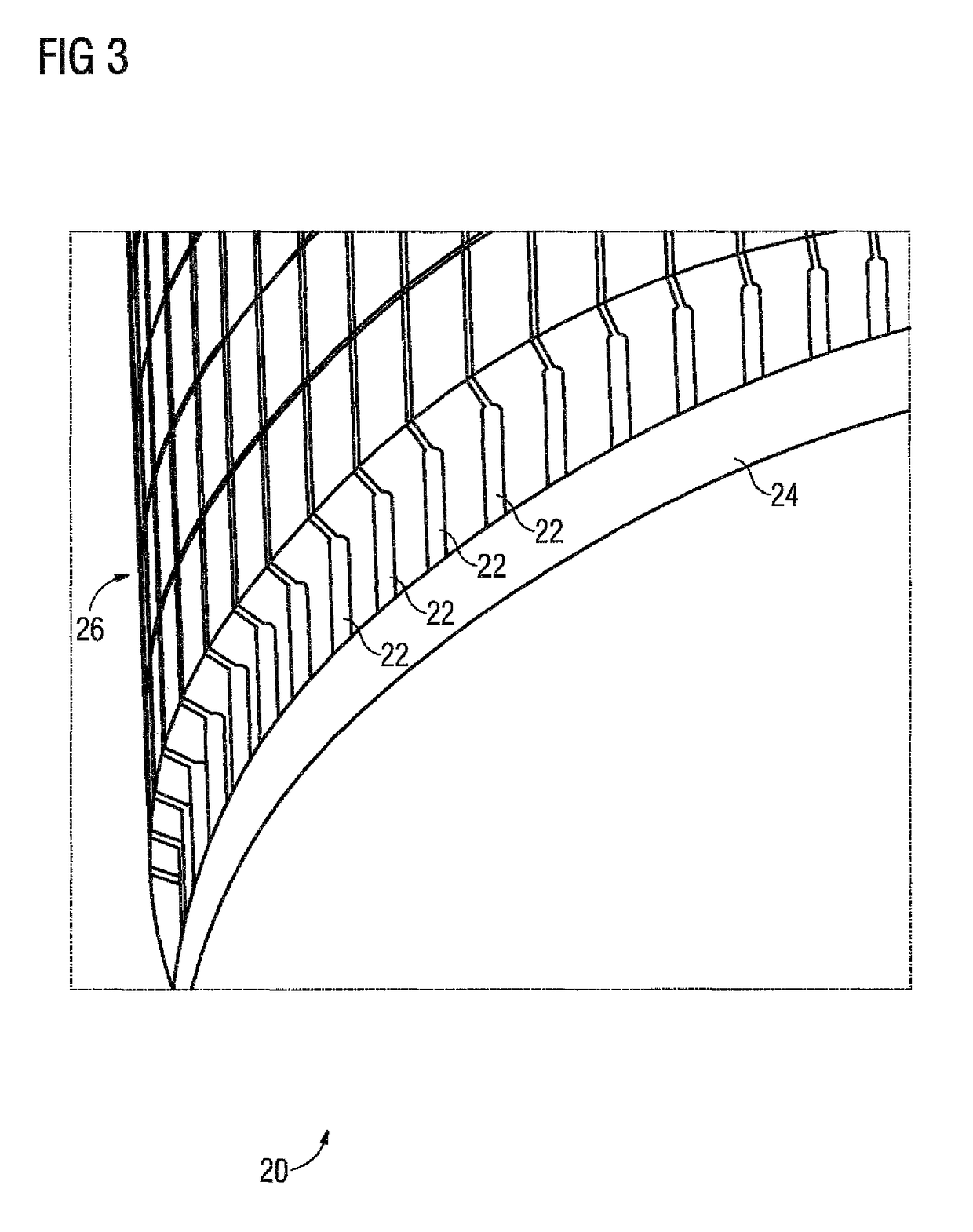Method for testing a bar winding of a rotor of a rotating electrical machine
a technology of rotating electrical machines and windings, which is applied in the direction of temperature measurement of moving solids, instruments, dynamo-electric components, etc., can solve the problems of high current and power loss of rotor bars, insufficient thermal energy of rotors in particular, and short circuit rings, so as to improve thermal radiation, shorten testing timewise, and improve detection accuracy
- Summary
- Abstract
- Description
- Claims
- Application Information
AI Technical Summary
Benefits of technology
Problems solved by technology
Method used
Image
Examples
Embodiment Construction
[0050]FIG. 1 shows in a perspective schematic view a rotor cage 10 of a rotor 20 of an asynchronous machine without core, with the rotor cage 10 having bars 12 which are each electroconductively connected at the ends to a short-circuit ring 14. In the present case both the bars 12 and the short-circuit ring 14 are formed from a copper alloy and the bars 12 soldered, welded or cast at the ends to the short-circuit ring 14. From the schematic side view of the rotor cage 10 in FIG. 2 it can be seen that at the ends the individual bars 12 penetrate slightly through the respective short-circuit ring 14.
[0051]In addition to the rotor cage 10FIG. 2 shows the core 16 which is made from insulated electrical sheets which are stacked to form the core 16. The core 16 does not have designated slots in which the bars 12 are arranged.
[0052]If the rotor constructed in this way is thermally stressed, the bars 12 expand in a different ways in relation to the core 16 and to the short-circuit ring 14. ...
PUM
| Property | Measurement | Unit |
|---|---|---|
| frequency | aaaaa | aaaaa |
| area | aaaaa | aaaaa |
| edge length | aaaaa | aaaaa |
Abstract
Description
Claims
Application Information
 Login to View More
Login to View More - R&D
- Intellectual Property
- Life Sciences
- Materials
- Tech Scout
- Unparalleled Data Quality
- Higher Quality Content
- 60% Fewer Hallucinations
Browse by: Latest US Patents, China's latest patents, Technical Efficacy Thesaurus, Application Domain, Technology Topic, Popular Technical Reports.
© 2025 PatSnap. All rights reserved.Legal|Privacy policy|Modern Slavery Act Transparency Statement|Sitemap|About US| Contact US: help@patsnap.com



